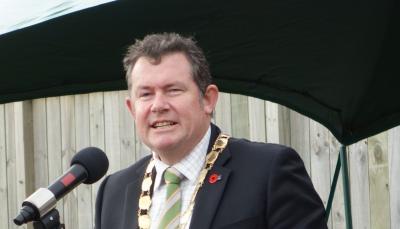Palmerston North City is the quintessential university town. It is the second youngest city in New Zealand per capita with an average age of 33, due to its large student population of nearly 20,000 tertiary students, Grant Smith, the Mayor of Palmerston North City, tells GovInsider.
The city has plans to attract young people not just to study, but to live in the city. “We’ll grow by another 20-30,000 people in the next twenty years,” says Smith. For a city with a population of 90,000, that is a substantial 30% increase.
But Smith notes that the council “[needs] to be mindful that just being a good city to live in will not retain young talent or attract investment”. In the coming years, Palmerston North will embrace technology, improve sustainability and create jobs to attract millennials to the city.
Going digital
With a great number of young people, Smith says, “you get take-up of technology [that is] greater than you would in an older demographic, or even in a metropolitan city”. “We have a great uptake of ultra-fast broadband here, one of the highest in New Zealand,” he notes.
The city council is going paperless in a number of ways, according to Smith. Firstly, similar to Tauranga City Council, building consent documentation will be done digitally from this week, on a cloud-based system. “The system enables building consent to be tracked from when they’re launched through to when they’re completed. That’s quite a big thing for us internally,” Smith explains. He adds that the council itself is going paperless too: “We conduct all our meetings electronically.”
The city also has a big focus on agricultural technology. Building on a “good agricultural reputation”—70% of the world’s sheep meat comes from within two hours of Palmerston North—the council is now in negotiations with Microsoft to establish an agritech centre in the city, he shares.
“They have honed in on New Zealand because of our good agricultural reputation and footprint. I’ve looked at different regions and we’ve probably got the most diverse agricultural sector here,” says Smith, adding that besides sheep meat, the city produces dairy, beef, produce, venison and deer.
Creating jobs
The council plans to accommodate more people through “intensification”, rather than building suburbs outwards, in a phenomenon called ‘urban sprawl’. “In terms of the district plan which enables the growth to develop, we prefer to look at buildings and more CBD [Central Business District] living rather than just continuing to grow suburb after suburb,” Smith says.
And for this growth to be sustainable, creating and retaining jobs are big on the agenda for the council. To that end, Smith believes the city is “very well-positioned” to host big data centres. “It is something we’ve been talking to some of the major players about,” he says.
“They generally don’t go into big cities, because the power is too expensive. They need lots of water to cool their facility,” Smith adds. “If you look overseas in places such as Europe, they are traditionally based in a rural but well-connected area.” To illustrate, Palmerston North is strategically located on the central lower part of the North Island of New Zealand, allowing it to be the “logistics distribution hub that we’ve become known for”, he says. “Our geological location really helps us.”
Clean energy
Technology also enables the council to achieve its sustainability goals, which are a big priority for them. “We’ve embraced electric vehicles, we have a number of them in our fleet now,” Smith says. Building inspectors and general officers now use electric vehicles, and so does the council’s eco advisor, who helps the public and businesses make better use of energy within their homes and buildings.“We will be looking to going electric rather than petrol in the coming years,” he adds.
There is also a focus on clean energy and lowering carbon emissions; the council produces 30% of its own energy. “We like to see ourselves as a eco-city, and we are future-focused,” Grant shares.
And in the next ten years, there will be a “major wastewater plant upgrade”, which will move away from the traditional method of simply discharging wastewater into a waterway. “We’re looking at all sorts of different options,” Grant explains.
As Palmerston North gears up to welcome 30,000 new citizens into its fold, millennials studying there may one day want to live there, too.
|I nterview with Mayor Grant Smith, Palmerston North City Council by Nurfilzah Rohaidi, GovInsider || June 28, 2017 |||





